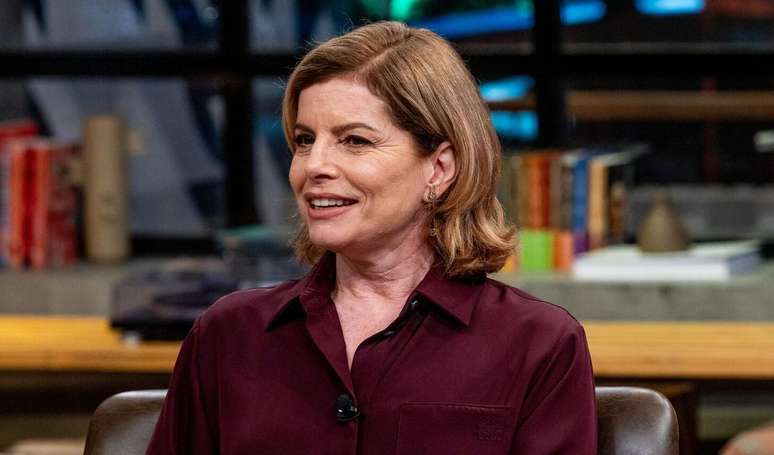The piece by Father José Maurício Nunes Garcia will be performed by the Meninos Cantores de Hamburg with the conductor Luiz de Godoy
The eyes remain fixed on the conductor. Even when the music stops. good, comes praise. Sheet music turned. New step. Cum Santo Spirito. After the brief introduction, the voices forcefully join the orchestra. It’s hard to ignore the impact of the scene: the music sung on the cathedral altar, the morning light filtering through the stained glass windows. It is the synaesthesia that calls.
All of this takes place on Tuesday morning at the Presbyterian Cathedral in the central region of the city. The choir comes from Germany, the Singing Boys of Hamburg; the orchestra is the USP Symphony; the director, Luiz de Godoy; the music, the Mass of Santa Cecilia, of Father José Maurício Nunes Garcia. Also on stage are members of the Jeholu Cultural Occupation, which discusses the black presence in the world of classical music.
“It is very special for me to be here to do this work in particular, it was a dream to conduct it, and even more so with this choir”, says after rehearsals the master Godoy, Brazilian of Mogi das Cruzes who is director of the ensemble in Germany. “But the presentation for me is the icing on a cake with so many layers that give meaning to what we’re doing.”
The project was born in 2020, at the invitation of Claudia Toni, curator, together with the pianist Cristian Budu, of the Sesc Chamber Music Festival, which takes place in different cities of the State of Sao Paulo until the 26th of this month. The idea was to bring Godoy, who graduated in Vienna and now lives in Germany, conductor at the Hamburg Opera, back to Brazil.
The discussion on the repertoire collided with different formats. At first there was a discussion of a program around the centenary of the Week of Modern Art, but in the end the focus shifted to the other great event of the year, the bicentenary of Independence. “THE Mass then it seemed a natural choice “, says the director.” Written in 1826, it is the most important choral-symphonic work and closest to the moment of Independence “.
After choosing the work, it is time to reflect on its interpretation. “I have been committed from the beginning to the idea of a decolonial approach. Our music has been heavily influenced by European music, in a hegemonic process. But over time this music has been the starting point of an autonomy movement for musicians. musicians of that country.time, who came together in brotherhoods and gave birth to Brazilian music, “explains Godoy.
In this sense, the concert represents a reversal. “I talked a lot with the children during the preparation in Germany. Singing this opera was an invitation for them to reflect on our history, our idiosyncrasies. I explained that at the time most of the musicians were black, but that this music came from the European tradition., until it starts to conquer a voice of its own. “
There were four months of preparation in Germany before the trip to Brazil. “To facilitate the process, I have also included in the repertoire of our concerts the music of national authors, such as Villa-Lobos, Pinto Fonseca, Ernani Aguiar, Antonio Ribeiro. This gave them the opportunity to learn more about how this Brazilian tradition choral singing has developed up to the present day, “he says.
The mass will be presented today in Mogi das Cruzes; tomorrow, Friday, the stage is the Presbyterian Cathedral of São Paulo; Saturday it’s Guarulhos’s turn; and, on Sunday, from Ribeirão Preto. In addition to the orchestra and choir, seven soloists perform: sopranos Erika Muniz and Tatiane Reis, mezzo-soprano Juliana Taino, baritone Davi Marcondes and tenor Mar Oliveira among them.
For Godoy it is an extraordinary job. “José Maurício did not keep his scores, he handed over the material for which the piece was intended. But with this it was different. He asked his son to keep it after his death. And if he considered it so special, I too must see it like this “.
According to Godoy, there are many contrasts in the dramaturgy of the Mass, which evokes the text of the Catholic Mass. “These contrasts are moving. And there are very suggestive passages. The Creed, for example. The score evokes such Brazilian credulity, at least I feel that way … It is the credulity of those who live by faith an impossible redemption, and in a very affectionate way “.
PERSONALITY
In the history of Brazilian music there are a trio of composers who, due to their talent and because they embrace much of the spirit of their time, have over time become symbols of the development of national composition. In this logic, Carlos Gomes was the country’s greatest author in the 19th century; Heitor Villa-Lobos, in the 20th century And before those two, at the turn of the 18th and 19th centuries, there was Father José Maurício Nunes Garcia.
Born in 1767, descendant of slaves, he began studying music at the age of 6 and became a harpsichordist, composer and organist. At that time, musical activity was closely linked to religious functions and the cassock was a means of achieving social status. Thus, at the age of 25, he was ordained a priest.
Shortly after the arrival of d. João VI in Brazil, in 1808, was elected choirmaster, a position of enormous importance in Rio de Janeiro. But if, on the one hand, his works by him gain more and more space, on the other he begins to deal with the prejudice of the Portuguese musicians who came to Brazil, who constantly called attention to what they called their “lack of color”. .
The Mass of Santa Cecilia it was written in 1826, when the composer had already left his official post and was going through a difficult period due to health and financial problems. It was commissioned by the Order of Santa Cecília, which he had helped found years earlier, and brought together musicians, many of them former students, who tried to help him with the assignment.
It was his last work: the composer would die in 1830. And it brings with it a number of surprising aspects. One of these is perhaps the greater freedom of writing, since the piece was not intended, this time, for official occasions, but at the request of fellow musicians.
The score has enormous dramatic force and has been described as almost operatic. “Musicology often associates this with the desire to satisfy the tastes of the time, but I think the Mass it is a symbol of his autonomy “, says Luiz de Godoy.” If there was a work in which every note was placed because he wanted it, it was this “.
The conductor sees in the piece a well-finished portrait of the composer. “It sums up what he did, but also looks to the future. There are arias that remind us of Rossini, but it is not opera, it is not Italian music. They are palettes that he applies with a Brazilian vocabulary. Here, José Maurício is also the composer of modinhas. “
Source: Terra
Emily Jhon is a product and service reviewer at Gossipify, known for her honest evaluations and thorough analysis. With a background in marketing and consumer research, she offers valuable insights to readers. She has been writing for Gossipify for several years and has a degree in Marketing and Consumer Research from the University of Oxford.







